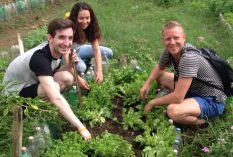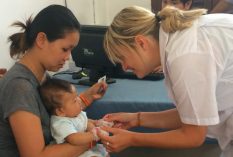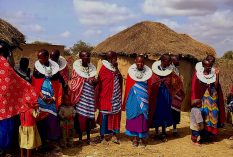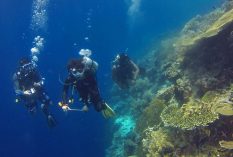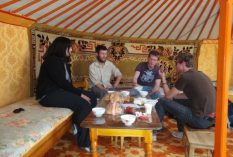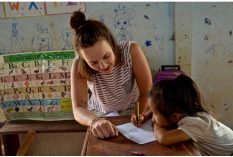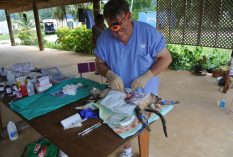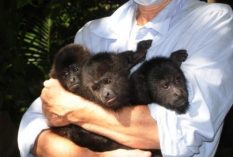“Overall, my experience at the Center was life changing. By the end of the project, I wished I could have spent more time at the center, as I felt I was only just starting to understand how everything functioned. My month volunteering there went very quickly and I feel the friends I made will be lifelong. The project itself definitely fulfilled its goal of making a positive impact on wildlife conservation. Because we worked so closely with the animals, the project was thorough at educating us on how to work appropriately with the needs of each animal. We learned about their diets, behaviors, injuries, and ages until maturity. Each day, we would clean the enclosures and center in the morning, making sure it was hospitable and comfortable for the animals we were rehabilitating, as well as presentable and welcoming for the visitors who keep our center running with their tickets and donations. Everyone working on the project cared deeply for the animals at the Jaguar Rescue Center. In addition, the permanent staff working on the project, had the skills and knowledge to educate us on making the most meaningful impact.
At the outset of the project, one challenge I encountered was understanding the routine of the center. Although volunteers come and go, it’s imperative that you get into the routine immediately so that the center can run as efficiently as possible. However, because the staff is so helpful and the longterm volunteers know how the center functions, this challenge was achievable. After just a few days at the center, I felt I knew what I had to do at any given time, even if not assigned a job. Another challenge I faced was understanding the specific behaviors of a variety of species of animals. On our first day at the center, Nerea, the chief operations officer, warned us about the fact that the animals we would be working with were wild and potentially dangerous if we did not know how to handle ourselves properly around them. Coming from New York and knowing little about such exotic species as sloths, howler monkeys, and toucans, I was originally a little worried. Because each animal is different, their body language and ways of showing distress are different as well. If uneducated on the behaviors of an animal, it is extremely hard to understand when they need something or are in pain, etc. However, as I began working more closely with the animals and taking careful note of all of the information Nerea would give us, I grew a lot more comfortable working with the animals. It was no longer a mystery why certain animals reacted in certain ways once I understood their background and why they were at the center. For example, Txantxi, the center’s collared peccary, is an extremely intelligent animal who needs a lot of attention and care. Because she will eventually grow to be much larger but cannot be released, we had to work closely with her to set limits on her actions and make sure she was safe roaming the center independently.
One success I am proud of is going into the forest with the center’s monkeys and watching over them as we let them explore the forest. Usually, volunteers are not able to go into the forest until the end of their trip because you have to understand the monkeys and know how to behave around them. For example, the female volunteers have almost no control over the adult monkeys, who want to exert their control over the females. In addition, we had to be very aware of the wild monkeys that come visit the center’s monkeys while we were out in the wild.
Because we had two days off per week, I was able to explore places outside the center. I spent a lot of time in Puerto Viejo exploring, going to the farmers market, and eating at local sodas. In addition, I visited Cahuita National Park, a beautiful park with a trail that lines the Caribbean shore.
Overall, the project surpassed my expectations. Never did I plan on having baby monkeys climb on me every day or observing sloths hungrily eat their veggies. We worked so much more closely with the animals than I expected and I know I would never have the opportunity to do something like this back home. I would definitely recommend the project to friends who have a passion for animals and are looking for a way to learn about wildlife conservation.”


